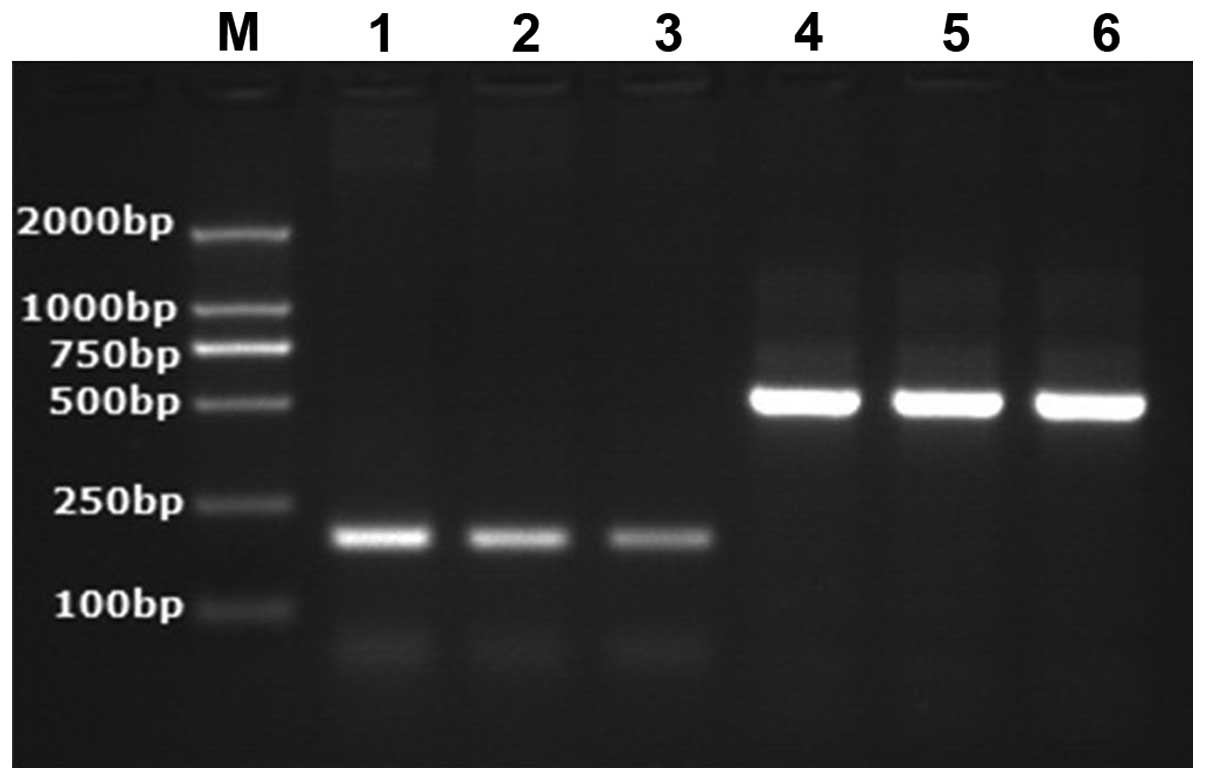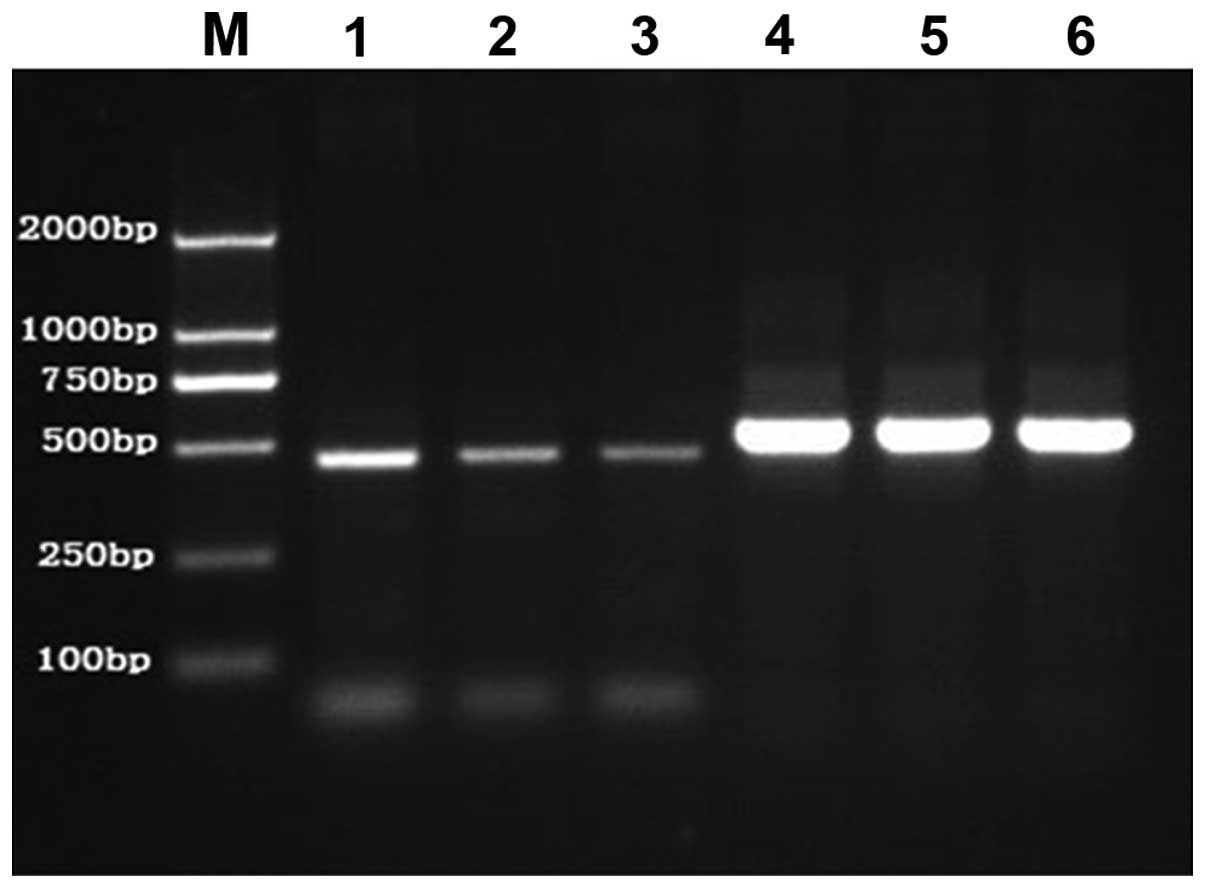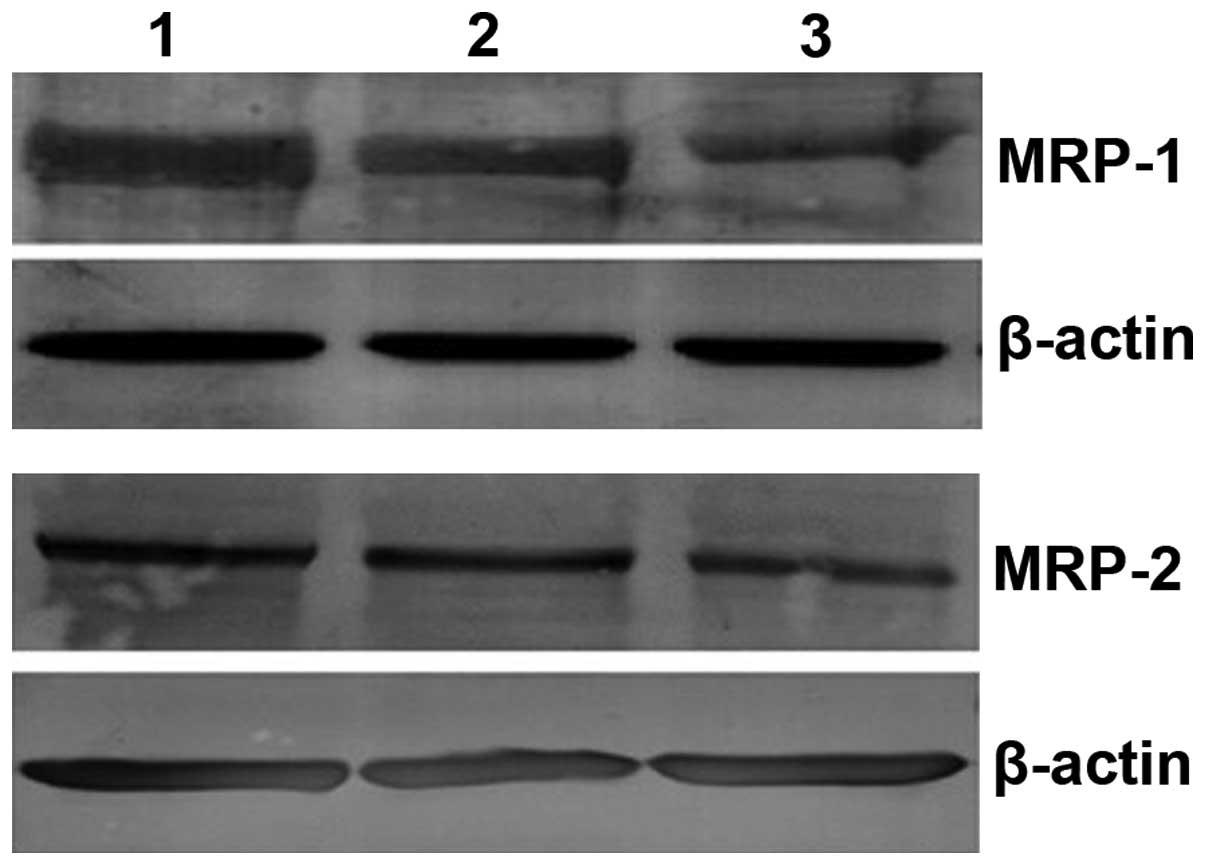|
1
|
Sugano H and Arai H: Epilepsy surgery for
pediatric epilepsy: Optimal timing of surgical intervention. Neurol
Med Chir (Tokyo). 55:399–406. 2015. View Article : Google Scholar : PubMed/NCBI
|
|
2
|
Epilepsy: Benefits and risks of
reoperation after failed surgery for intractable epilepsy. Nat Rev
Neurol. 11:2472015. View Article : Google Scholar : PubMed/NCBI
|
|
3
|
Sebe JY and Baraban SC: The promise of an
interneuron-based cell therapy for epilepsy. Dev Neurobiol.
71:107–117. 2011. View Article : Google Scholar : PubMed/NCBI
|
|
4
|
Jose M and Thomas SV: Role of multidrug
transporters in neurotherapeutics. Ann Indian Acad Neurol.
12:89–98. 2009. View Article : Google Scholar : PubMed/NCBI
|
|
5
|
Xu J, Deng Y and Gao B: Blood-CSF barrier
related translocator and intractable epilepsy. J Appl Clin Pediatr.
27:1900–1902. 2012.
|
|
6
|
Luna-Tortós C, Fedrowitz M and Löscher W:
Evaluation of transport of common antiepileptic drugs by human
multidrug resistance-associated proteins (MRP1, 2 and 5) that are
overexpressed in pharmacoresistant epilepsy. Neuropharmacology.
58:1019–1032. 2010. View Article : Google Scholar : PubMed/NCBI
|
|
7
|
Marquez B and Van Bambeke F: ABC multidrug
transporters: target for modulation of drug pharmacokinetics and
drug-drug interactions. Curr Drug Targets. 12:600–620. 2011.
View Article : Google Scholar : PubMed/NCBI
|
|
8
|
Schinkel AH and Jonker JW: Mammalian drug
efflux transporters of the ATP binding cassette (ABC) family: An
overview. Adv Drug Deliv Rev. 55:3–29. 2003. View Article : Google Scholar : PubMed/NCBI
|
|
9
|
Keppler D: Multidrug resistance proteins
(MRPs, ABCCs): Importance for pathophysiology and drug therapy.
Handbook Exp Pharmacol. 201:299–323. 2011. View Article : Google Scholar
|
|
10
|
Kwan P, Arzimanoglou A, Berg AT, Brodie
MJ, Allen Hauser W, Mathern G, Moshé SL, Perucca E, Wiebe S and
French J: Definition of drug resistant epilepsy: Consensus proposal
by the ad hoc Task Force of the ILAE Commission on Therapeutic
Strategies. Epilepsia. 51:1069–1077. 2010. View Article : Google Scholar : PubMed/NCBI
|
|
11
|
Rong H, Jin L, Wei W, Wang X and Xi Z:
Alpha-synuclein is a potential biomarker in the serum and CSF of
patients with intractable epilepsy. Seizure. 27:6–9. 2015.
View Article : Google Scholar : PubMed/NCBI
|
|
12
|
Grote A, Witt JA, Surges R, von Lehe M,
Pieper M, Elger CE, Helmstaedter C, Ormond DR, Schramm J and Delev
D: A second chance-reoperation in patients with failed surgery for
intractable epilepsy: long-term outcome, neuropsychology and
complications. J Neurol Neurosurg Psychiatry. pii:jnnp-2015–310322.
2015.
|
|
13
|
Fernandez L, Gedela S, Tamber M and Sogawa
Y: Vagus nerve stimulation in children less than 3 years with
medically intractable epilepsy. Epilepsy Res. 112:37–42. 2015.
View Article : Google Scholar : PubMed/NCBI
|
|
14
|
Yi JH, Cho YJ, Kim WJ, Lee MG and Lee JH:
Genetic variations of ABCC2 gene associated with adverse drug
reactions to valproic acid in Korean epileptic patients. Genomics
Inform. 11:254–262. 2013. View Article : Google Scholar : PubMed/NCBI
|
|
15
|
Chen YH, Wang CC, Xiao X, Wei L and Xu G:
Multidrug resistance-associated protein 1 decreases the
concentrations of antiepileptic drugs in cortical extracellular
fluid in amygdale kindling rats. Acta Pharmacol Sin. 34:473–479.
2013. View Article : Google Scholar : PubMed/NCBI
|
|
16
|
Xu Y, Wang L, Zheng X, Liu G, Wang Y, Lai
X and Li J: Positive expression of p53, c-erbB2 and MRP proteins is
correlated with survival rates of NSCLC patients. Mol Clin Oncol.
1:487–492. 2013.PubMed/NCBI
|
|
17
|
Kovalev AA, Tsvetaeva DA and Grudinskaja
TV: Role of ABC-cassette transporters (MDR1, MRP1, BCRP) in the
development of primary and acquired multiple drug resistance in
patients with early and metastatic breast cancer. Exp Oncol.
35:287–290. 2013.PubMed/NCBI
|
|
18
|
Nasilowska-Adamska B, Solarska I,
Paluszewska M, Malinowska I, Jedrzejczak WW and Warzocha K:
FLT3-ITD and MLL-PTD influence the expression of MDR-1, MRP-1, and
BCRP mRNA but not LRP mRNA assessed with RQ-PCR method in adult
acute myeloid leukemia. Ann Hematol. 93:577–593. 2014. View Article : Google Scholar : PubMed/NCBI
|
|
19
|
Calatozzolo C, Pollo B, Botturi A,
Dinapoli L, Carosi M, Salmaggi A and Maschio M: Multidrug
resistance proteins expression in glioma patients with epilepsy. J
Neurooncol. 110:129–135. 2012. View Article : Google Scholar : PubMed/NCBI
|
|
20
|
Yao D, Liu L, Jin S, Li J and Liu XD:
Overexpression of multidrug resistance-associated protein 2 in the
brain of pentylenetetrazole-kindled rats. Neuroscience.
227:283–292. 2012. View Article : Google Scholar : PubMed/NCBI
|
|
21
|
Zhang Y, Dai Y, Rui L, et al: Effect of
Oxcarbazepine on multidrug resistance associated protein 1
expression in hippocampus of kainic acid-induced seizure in rats
during development period rats. Chin J Appl Clin. 28:1170–1171.
2013.
|
|
22
|
Zhan L, Ping W and Jing Z: The expression
of multi-drug resistance transmembrane transporter in the
peripheral blood of patients with multi-drug resistant
tuberculosis. Zhonghua Jie He He Hu Xi Za Zhi. 34:520–522. 2011.(In
Chinese). PubMed/NCBI
|
|
23
|
Song Y, Bing L and Zhong L: Expression of
multi-drug resistance-associated protein genein acute leukemia.
Acta Acad Med Qingdao Univ. 37:41–43. 2001.
|
|
24
|
Ban JJ, Jung KH, Chu K, Lee ST, Jeon D,
Park KI, Moon HJ, Kim H, Kim S, Lee SK, et al: Profiles of
multidrug resistance protein-1 in the peripheral blood mononuclear
cells of patients with refractory epilepsy. PLoS One. 7:e369852012.
View Article : Google Scholar : PubMed/NCBI
|
|
25
|
Murakami N, Morioka T, Hashiguchi K,
Suzuki SO, Shigeto H, Sakata A and Sasaki T: Clinical and
histological characteristics of ictal onset zone in cases of
intractable epilepsy associated with dysembryoplastic
neuroepithelial tumor. Brain Nerve. 67:525–532. 2015.(In Japanese).
PubMed/NCBI
|
|
26
|
Mateo-Carrasco H, Serrano-Castro PJ,
Molina-Cuadrado E, Goodwin M, Nguyen TV and Kotecha PN: Role of
high-dose levetiracetam as add-on therapy for intractable epilepsy:
Case report and brief review of the literature. Int J Clin Pharm.
37:559–562. 2015. View Article : Google Scholar : PubMed/NCBI
|
|
27
|
Meador KJ, Kapur R, Loring DW, Kanner AM
and Morrell MJ: RNS® System Pivotal Trial Investigators: Quality of
life and mood in patients with medically intractable epilepsy
treated with targeted responsive neurostimulation. Epilepsy Behav.
45:242–247. 2015. View Article : Google Scholar : PubMed/NCBI
|
|
28
|
Lan T, Teng M, Song J, et al: The
expression of multidrug resistance protein-1 in peripheral blood of
patients with intractable epilepsy. Zhonghua Jie He He Hu Xi Za
Zhi. 39:403–404. 2006.(In Chinese).
|
|
29
|
van Vliet EA, Redeker S, Aronica E,
Edelbroek PM and Gorter JA: Expression of multidrug transporters
MRP1, MRP2, and BCRP shortly after status epilepticus, during the
latent period, and in chronic epileptic rats. Epilepsia.
46:1569–1580. 2005. View Article : Google Scholar : PubMed/NCBI
|
|
30
|
Lazarowski A, Lubieniecki F, Camarero S,
Pomata H, Bartuluchi M, Sevlever G and Taratuto AL: Multidrug
resistance proteins in tuberous sclerosis and refractory epilepsy.
Pediatr Neurol. 30:102–106. 2004. View Article : Google Scholar : PubMed/NCBI
|
|
31
|
Qu J, Zhou BT, Yin JY, Xu XJ, Zhao YC, Lei
GH, Tang Q, Zhou HH and Liu ZQ: ABCC2 polymorphisms and haplotype
are associated with drug resistance in Chinese epileptic patients.
CNS Neurosci Ther. 18:647–651. 2012. View Article : Google Scholar : PubMed/NCBI
|

















